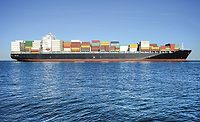Canada’s Paint and Coatings Industry to See Slow but Steady Growth




Canada is an integral part of the global paint and coatings industry despite facing a sluggish economy in recent months and a weaker dollar hovering around the U.S. 75-cent mark since January. However, recent numbers just released for the first quarter reveal the Canadian economy is very strong out of the gate, with first-quarter GDP growth much stronger than anticipated, and is expected to continue for the balance of the year. While industry is set to face imminent challenges, such as strict environmental regulations and a greater demand for product stewardship, Canadians can take comfort in the fact that paint and coatings is a mature, slow-growing industry and is expected to do well in the long run.
With one of the highest standards of living, Canada is similar to the United States as an international leader in per capita coatings consumption rates at 8.4 kg/person. Its industrial output continues to post good results as a percentage of GDP, and civil construction is expected to outperform that of the United States. Projections show the demand for Canadian exports will increase on the heels of the growing U.S. recovery. This in turn will encourage investment, allowing companies to boost their productive capacity and secure export opportunities.
It goes without saying that trade is critical for increasing or maintaining the Canadian standard of living, with 70 percent of GDP dependent on trade. Energy exports felt the brunt of the volatile oil market in 2015, especially in relation to oversupply and spiraling prices, and as such Canada must consider other options, as energy exports are expected to remain stagnant this year. An uptick in oil prices is expected in the coming months, mitigating some of the pressures in an already harried industry.
Turning towards nonenergy exports, like engineering services for example, can prove instrumental in helping keep Canada at the top of its game. Analysts already project that nonenergy commodities will represent nearly all the export growth in 2016. Moving to other sources -beyond natural resources -will help boost growth. Improved global growth and rebuilding capacity in the goods sector, impacted by the recent recession, will help Canada in the long run. Data just released by the global accounting firm KPMG show this is clearly the case. Its report noted that Canada is the second most cost-competitive market in a comparison test of the top 10 leading industrial countries such as the United States, Australia and Japan.
Turning Things Around
Data from Industry Canada also suggest that Canadian industries that are extremely sensitive to the exchange rate shrank in 2015. The loss of production facilities in some sectors led to losses in manufacturing capacity. The problem is further exacerbated when manufacturers under invest in their stock of machinery and equipment. The paint and coatings manufacturing sector felt the impact of this investment loss in 2015. But things should start to turn around in 2016, with GDP increasing by nearly 2 percent, as certain industries and regions like Ontario and British Columbia are expected to pick up speed. A case in point is the wood manufacturing sector, which will see growth. Demand for Canadian products is strongly connected to residential construction in the United States, partly as a result of the positive exchange rate and a continued recovery there.
Another strong industry contender in 2015 was motor vehicle manufacturing. The weak Canadian dollar and record sales in North America gave this sector a huge boost. Despite the upward trend in auto assembly investments in Canadian facilities, however, automotive paint manufacturing shipments will not expand much because production levels are not expected to rise in either 2016 or 2017. This is due to a plateauing of Canadian new vehicle sales as well as production changes in the U.S. and Mexican markets. However, if the recent uptick in GDP growth continues, this may change. Adding further fuel for the automotive sector is the 2016 federal budget unveiled in March, announcing the extension of the Automotive Innovation Fund to support critical strategic R&D projects and long-term investments in the Canadian automotive sector. Ottawa will work with the Ontario government and industry to build and sustain the long-term competitiveness sector.
In 2015 the Canadian paint industry’s manufactured shipments posted a 2.6 percent drop in value, reaching nearly $1.7 billion, while the overall volume of manufactured paint shipments declined 3.87 percent, falling below 255 million litres. Paint imports dropped nearly 2 percent in value and 5 percent in volume, reaching $1.24 billion. The ratio of paint import/domestic was 48 percent, signalling a loss in Canadian manufacturing. Conversely, the construction sector is vital to the Canadian economy. Sales of architectural paint (domestic and imported), for instance, were responsible for 53 percent of the total volume of paint sales and 40 percent of the total dollar sales.
Another strong area for the national economy is residential renovation investment, with renovation and remodelling activity staying on course for 2016. However, activity in the new housing segment will cool between now and 2018. Lower oil prices and the weaker dollar will also affect the nonresidential construction sector. But with the recent federal budget providing $120 billion in infrastructure spending over 10 years, the local construction industry is expected to see a slow return of single-family homebuilding, more prefab/off-site construction, and increased green building in the commercial and residential sectors.
The industrial paint sector outperformed the architectural sector in 2015 with regard to the value of wholesale shipments and imports, securing 43 percent of the total share of $3 billion. The Canadian automotive sector, which includes the performance of the automotive refinish and the OEM paint manufacturing segments, maintained 17 percent of that value and another 10 percent of the total volume sold in the country.
Waterborne paint products dominated the domestic architectural sector, accounting for more than 90 percent of the products sold last year, rising 12 percent in the last decade. The increase was primarily due to the 2009 introduction of the Canadian Volatile Organic Compound (VOC) Concentration Limits for Architectural Products Regulations and industry’s continued promotion of waterborne paint use.
Leading by Example
In 2006, Canada spearheaded the development of toxic substance management initiatives to protect human health and the environment, introducing the multiphase Chemicals Management Plan (CMP). Canada has implemented, among others, a systematic, science-based process for the “Categorization” and “Screening Assessment” of roughly 23,000 legacy substances that formed the initial Domestic Substances List, and the rapid screening of lower-risk chemical substances.
The first phase of the CMP evaluated 195 substances and identified 80 risk management instruments (60 were implemented and 20 are at the proposal stage). Only two bans emerged in the first phase: Bisphenol A (Challenge Batch 2) banned in baby bottles along with the implementation of a Pollution Prevention Plan (PPP) for industrial effluents. The other consideration for a ban relates to the use of TCEP (Batch 5) in home products such as polyurethane foam in furniture, electronic products, adhesives, nonapparel textiles, upholstery, carpets, rubber and plastics, and paints and varnishes. The second phase identified 525 substances for risk assessment and risk management, with six risk management scopes of substances meeting specific criteria under the Canadian Environmental Protection Act. In total, 158 substances are implicated.
The third and final phase, set to begin in June of 2016, focuses on the evaluation of the remaining 1,550 substances, representing 37 percent of the total. These are what Canadian government officials have described as “a mixed bag with a wide range of substance complexity and poor data points.” It will be a challenge for industry to provide the requisite data needed by government to make informed decisions on risk management measures, without negatively impacting the substances used in the coatings industry. CPCA has determined that 35 percent of the 1,550 substances to be evaluated over the next five years are used in the coatings sector.
As part of the chemicals management process over the past 10 years, the paint and coatings industry succeeded in engaging in a collaborative work effort with the federal government, academia, industry and international authorities in support of a robust information-gathering and risk-assessment process for 2,270 substances. A huge part of this success was CPCA’s creation of a paint and coatings working group that includes key federal officials in the evaluation of substances used in the sector. Canada’s approach on chemicals management has been widely regarded in international circles, and other countries, including Brazil, Australia and the United States, are now considering following a similar process.
Looking for a reprint of this article?
From high-res PDFs to custom plaques, order your copy today!









